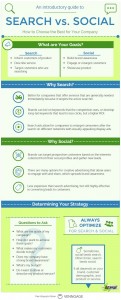
If you’ve been meaning to start a blog for your business but have never had the time, the current COVID-19 situation might be the perfect time to get going. Right now, all over the world, literally millions of us are at home.
For many small businesses, this is a time of severe distress as they are navigating how to operate, coping with losing income, and maybe even having to close up shop for a bit. For others, it means having more time and headroom to think about new projects or new ways to communicate with their customers and market their businesses.
Remember, even during times of crisis, the basics of online marketing remain as valid as ever. One of the most economic and simplest ways to promote your company is via a business blog. When it’s done right, blogging will direct visitors to your website, increase sales, set up your authority as a leader in your field, and even help you enter new markets.
Within this article, I’ll explain exactly what you need to do to launch your own business blog. However, before we dive in, you should know exactly what your reasons are for starting a business blog, because it will impact every aspect of your blog’s building process.
It is time to create a blog and join the global blogging community?
As it is both free and potentially financially valuable, more people are now joining the blogging community than ever before. From our side, there’s a lot of reasons it makes sense:
1. Right now, this is the best way to market your business
Today, businesses are foolhardy not to accept the blogging environment. Getting a professional website is all very well, but if you use a frequently updated blog to show current deals and promotions, consumers will see you as more open, authentic, and, most importantly, more active in your company.
2. You could potentially earn passive income
With blogging becoming more and more popular, there is no question that it can become a side hustle, or even a profession on its own. Blogging is easily a full-time job if a blog is supposed to achieve its full potential. Hard work and perseverance will earn you money, especially if you want to focus your efforts in your local community.
Advertising on your blog could also afford you passive income to help fund your business, whether it’s through affiliate marketing, ad revenue, or reviewing products for other companies.
3. You can become part of a community
All fellow bloggers want for new bloggers to be part of the community and be active by following blogs and leaving comments. With websites like “Bloglovin,” it’s easy to have an enclosed place for your favorite blogs on the Internet while also inspiring your own posts and stories.
4. See it as the potential for self-growth
By broadcasting online, you will provide time for thought and perspective. You will be able to look back and learn from past creative efforts, not only encouraging your style of blog entries but also your own self-growth and esteem. It helps your imagination to flourish, as well as your trust and aspirations, by communicating your ideas in a public way.
5. You can learn new skills
Whether it’s simply editing photos and using templates, or modifying your blog’s aesthetics, you’ll learn a lot of simple, but useful knowledge about the technological age we’re living in. Social networking, SEO blogging, photo formatting — these are all simple skills that you can pick up within the first few weeks of starting your blog.
6. It’s a great creative outlet
Blogging provides a creative outlet for those who feel stuck in their current everyday life or everyday marketing techniques. Having a blog lets you channel your creativity, hone your expertise, and promote your business at the same time. And what better way to be imaginative than when you have the opportunity to do it in the comfort of your own house?
7. It will create new opportunities
The main and perhaps most important reason to start a blog: it provides countless possibilities for its owner. Be it in the form of communication, financial gain, or self-growth, blogging definitely brings your personality out to the world and lets you see it in a very unique way.
8. It’s easier than you think
Last but certainly not least, building a blog will most likely be much easier than you think. It takes the average person roughly 40 minutes to set up a business blog, and less than two hours to have it fully customized. In other words, if you start in the morning, you could have your blog up and running before lunchtime.
Steps to starting your business blog
There are many considerations to take into account when building a business blog. Furthermore, the COVID-19 crisis has brought a multitude of additional challenges to our door. It’s great to see how small business owners not only adapt, but also find innovative ways to make social distancing a little less antisocial through online marketing.
Setting up a blog is nowhere near as complicated as you might think. You should be aware which costs are important to pay, as free services do not always cover all the prerequisites. It requires very little technical expertise and little to no coding, depending on your chosen blogging platform.
We will be touching on four main steps you have to follow in order to get it right from the get-go. By following our steps, your blog should be set and ready to go within the hour!
- Choose your blogging platform
- Plan your posts
- Start writing
- Accept that your blog will continually evolve
Step 1 – Choose your blogging platform
Choosing where to build a blog is almost the first thing to do. If you already have your Constant Contact website, we make it easy to discover you or your new blog with one of the industry’s best website building and blogging platforms.
If you would like to look at other options there are several popular alternatives available, but our recommendation would be to build your blog on the same platform as your website if possible.
- Blogger – great for beginners
- WordPress – for those with more advanced knowledge
- Tumblr – a nice mix of social networking and blogging. It’s definitely an interesting take on blogging and easy to use
Step 2 – Plan your posts
Before you start putting your digital pen to paper, you have to know that you’ve got all that you need to start writing. Many new bloggers forget the planning process, and while you can get away with missing the planning stage, laying a solid foundation will actually save you time and help you build good blogging habits.
2.1 Decide on a topic that interests you
There’s an old proverb that goes, “No fun for the writer, no fun for the reader.” Your industry makes no difference. As a blogger, this statement will remain one of your core principles. Before following our suggested steps, choose a subject or topic that really interests you. Nothing will ruin a blog post more efficiently than the writer’s lack of enthusiasm.
You also need to be able to embrace that not all your posts will be exciting. Some posts may feel like a chore, but if you have some form of control over what you’re writing about, then choose themes that you’d like to read – even if they feel a little too niche. Having a specific audience you’re writing for is actually a good thing! And the more excited you are about your subject, the more enthused your readers will be after they’ve read it.
2.2 Write your outline first
Great blog posts take some time and effort. Some of the most well-known bloggers also start with a very rough idea and then keep going from there. That’s where an outline comes in. An outline does not have to be long, or even very detailed – it’s only a useful guide to help ensure that you write a well-defined post on your chosen theme or topic.
Consider the following example outline:
- Introduction
- Summary of your key points
- Section 1 – More information on your chosen topic – add facts and cite your sources
- Section 2 – Expand with additional or alternative views that differ from your standpoint
- Section 3 – Look at other examples in the industry or other important news
- Section 4 – Conclusion – wrap up your posts with a positive note
The aim of the outline is to make sure you know what you’re going to discuss, how you’ll organize the segments, and help you concentrate on the key points that each segment will contain. Outlines will keep you honest. They will stop you from investing time and effort in long and drawn-out metaphors and keep you focused on the main message of your post. Whether you start writing your outline on your word processor, a piece of paper, or a bar napkin, do whatever it takes to keep yourself focused.
2.3 Do your research
One of the greatest secrets that those with a successful blog don’t want you to know is they don’t necessarily know it all. Truth be told, they often don’t know anything about a specific subject before sitting down to write about it.
That’s not to suggest that all bloggers are insincere fraudsters.
Quite the opposite, the inherent curiosity of many bloggers is what makes them successful at what they do. If you write for a living, you need to hop happily from one topic to the next, even though you may know little about it. The trick lies in learning how to research a blog post properly.
When looking at sources, it is a bad idea to rely solely on Wikipedia as your primary source. When you rely on information from third parties to compose your blog article, pick the authoritative sources. Public organizations, policy websites, much-quoted academic articles, and leading business experts are all clear examples of this.
However, remember that no one is right 100% of the time, so approach each source with a careful measure of practiced skepticism and investigate everything until your information is solid.
2.4 Check your facts
All it takes is one blatant mistake to tank your reputation. When you’re just starting out, your reputation and credibility can take a huge hit if you’re publishing misleading material, and even if you’ve got a blog with millions of loyal followers, your fans would be all too happy to hop over your error – just look at the comment sections of publications like Wired or TechCrunch to see how easily this can happen.
In case you fall victim to a well-executed hoax, repeat commonly spread misinformation or actually make a mistake, immediately own it and be open about your edits. When you’re trying to get something past your followers, you can bet the harm will be further exacerbated by them calling you out on it. Be frank, be responsible, and repair it — fast.
Step 3 – Start writing
Once you’ve done your research, checked your facts, and done your outline, it’s time to start writing. Writing a blog post involves two main techniques. You can either take a seat and compose a whole draft in one sitting, or you can slowly chip away at it over time. There’s no right answer or wrong answer here — just anything that works for you.
Nonetheless, I still suggest getting done as much in one session as possible. This encourages keeping focused on the subject, minimizes the risk of missing crucial points, and also lets you get the whole thing out of your head faster.
Even if you get more done in bursts, try to maximize your output. The more opportunities you’ve got to revisit a draft, the more tempting it’s to add a little here and a little there, and before you know it, you may be missing the point completely. Even if you choose to write a blog post over several sessions, get as much done as you can in one sitting.
As with other skills, the more you do it, the simpler and more intuitive writing becomes. You will find it takes a week (or longer) to write a post when you first start, but you’ll be knocking out fantastic posts in hours with some practice.
Step 4 – Accept that your blog will continually evolve
Be realistic about your expectations. Remember that no blog post will ever be 100% perfect. I do not recommend publishing sloppy work, nor do I suggest you shouldn’t be meticulous with the details.
However, I’m saying that even the best blog posts can always be improved in some way or form, but time is always against us. As you’ll probably want to publish more than one post a month, agonizing over each post could drain you from the urge to write and waste precious time.
As such, strive to make every post as good as it can be, learn from your experiences, and then step forward and continue your journey to becoming a better blogger.
Conclusion
Your initial blog setup and your ideas around your first topic should now be done and ready to go. If by some unfortunate circumstance you get stuck, visit forums or help sections. As discussed, most bloggers are very eager to assist new bloggers with any setup or usability issues as they want you to succeed and become part of the business blogging community.
Digital & Social Articles on Business 2 Community
(67)










